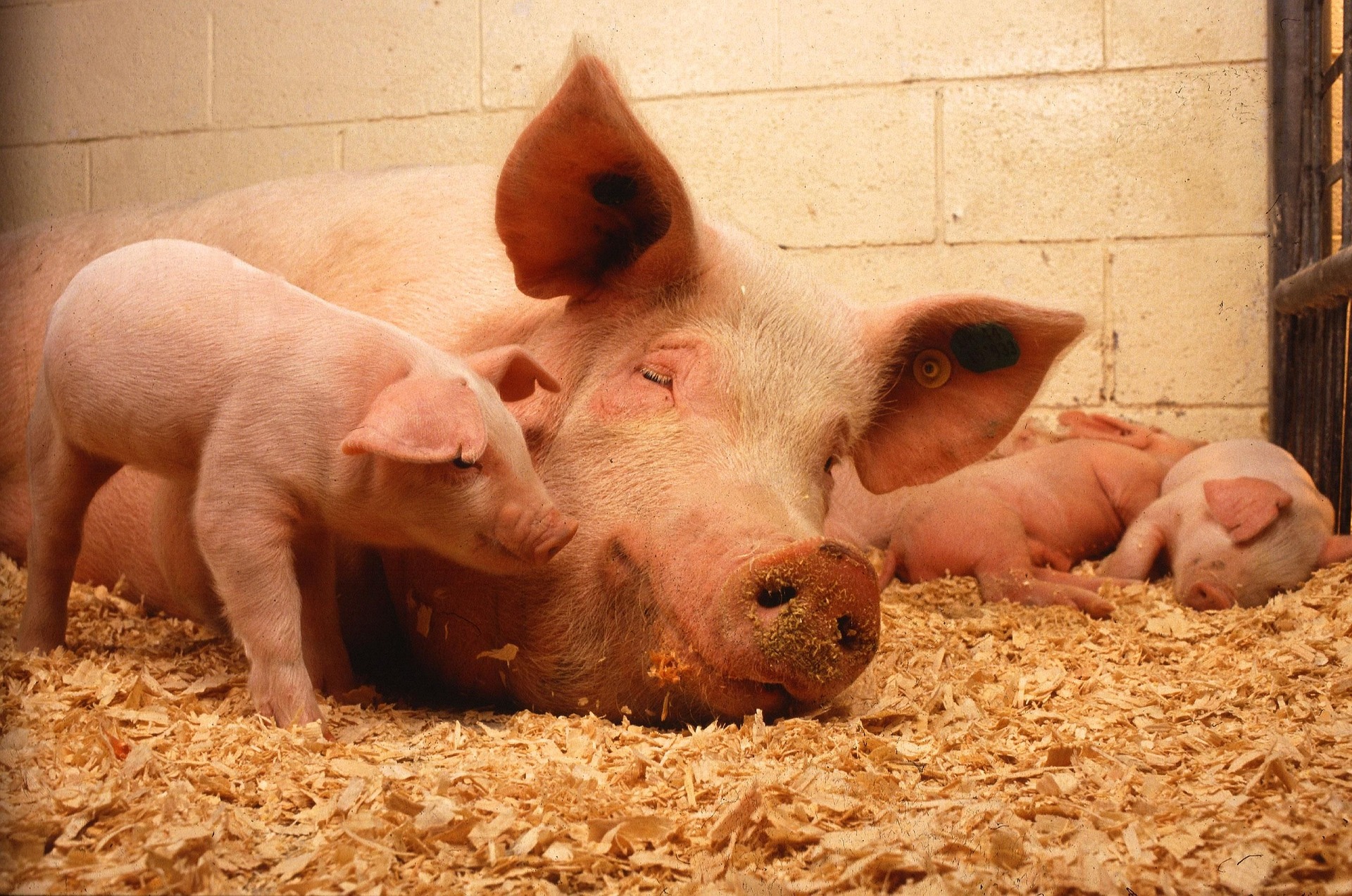A healthy pig starts with a healthy sow and the most critical period in the life of a pig is from birth to weaning. Once a piglet is born, it has basic needs that need to be considered.
A good environment
Piglets must arrive in a clean, sanitised farrowing facility which is free from disease causing organisms. The temperature must be regulated and suitable for their survival. Young pigs are unable to adequately regulate their body temperature and hence it is imperative that a creep area is provided for them that is warm enough (temperature of 33 to 38°C). It is important to provide protection for weak piglets against crushing by designing the farrowing pen in such a way that the sow does not lie on the piglets.

The creep area should be warm enough, sanitised and free from bacteria that can cause diseases. (Source: Pixaby)
Adequate and regular nutrition
Good nutrition is important for a piglet’s growth and health. It is cardinal that newborn piglets receive colostrum as soon as possible after birth as it contains immunoglobulins. These transfer immunity from the mother to the newborn piglet and helps it fight off infections. If a sow has more piglets than teats, move the extra piglets to another that has fewer piglets but those born within few days of each other so that all the piglets have access to the milk.
The sow’s milk does not contain enough iron, therefore it is necessary to inject the piglets with about 150 to 200 mg of iron 2 to 3 days after birth. If this is not done, an iron deficiency could occur resulting in anaemia, poor appetite, and consequently poor growth.
Creep ration must be introduced around week three after birth for maximum gain through to weaning. The creep ration must be of high quality and always fresh to encourage feeding. Ensure to feed small amounts at intervals. Piglets will not eat the feed that has over-stayed and has become stale.

It is important that newborn piglets receive colostrum which contains immunoglobulins and transfers immunity from the mother to the newborn piglet and helps fight infections. (Source: Pixaby)
The high-quality feed accelerates the development of the digestive system of the piglet, thereby enhancing digestive processes. A high-quality creep feed must be rich in milk and animal by-products which are highly digestible. Creep diets help the piglets to become accustomed to feed and prepares them for the post-weaning diet.
A weaner diet is fed from around seven to ten weeks. It is important to gradually transition to a weaner diet from creep. A transition period of five to seven days is recommended. The first days after weaning are usually associated with low feed intake which could result in weight loss, hence the need to gradually transition between the two diets.
Weaner diets are lower in milk and animal by-products. Weaner diets are formulated to meet the requirements for a specific body weight. Categorise piglets into light, medium and heavyweight if large variations occur, and adjust feed intake and nutrient requirement per category. This will help reduce the variation and save costs on creep and weaner feed.
Develop a feeding programme that will be either based on age or weight of the piglets to reduce the variations and improve growth. A feeding programme must take into account the number of dietary changes for piglets.
For more information, contact the Novatek Technical Team or visit https://novatekfeeds.com/.








